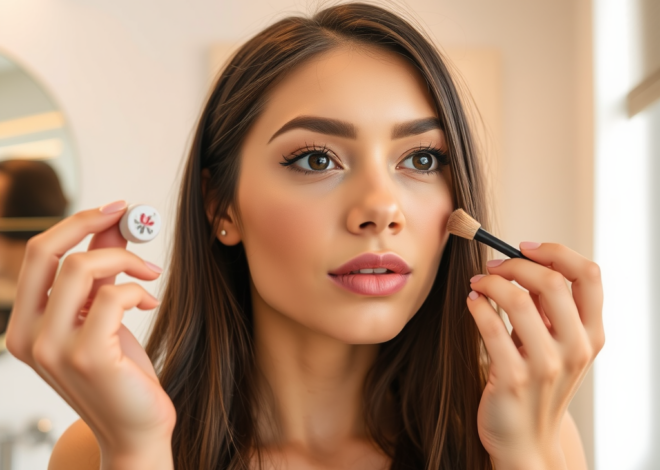
Dry Cleansing: The Newest Trendy Way to Wash Your Face
The beauty industry is constantly evolving, and the latest trend shaking up skincare routines is dry cleansing. This innovative technique promises to revolutionize the way we think about cleaning our skin by offering a gentle yet effective way to remove impurities without water. In this article, we’ll explore the concept of dry cleansing, its benefits, the ideal products to use, a step-by-step guide on how to incorporate it into your routine, and tips for maximizing its effectiveness.
What is Dry Cleansing?
Dry cleansing is an approach to face washing that eliminates the use of water during the initial phase of cleansing. Instead, it relies on the application of cleansing oils, balms, or creams directly onto the skin. The rationale behind this method is to dissolve impurities, makeup, and excess sebum without the potentially harsh effects of water, especially hot water. This technique is particularly beneficial for individuals with sensitive or dry skin types, as it minimizes irritation and helps maintain skin’s natural moisture barrier.
The process begins with massaging the chosen product onto dry skin, allowing the active ingredients to bind with oil-based impurities. This method not only cleanses but also nourishes the skin, leaving it feeling soft and supple. The aim is to achieve a thorough cleanse with less abrasion, making it a gentle alternative to traditional face washing.
Benefits of Dry Cleansing

Dry cleansing offers numerous advantages that appeal to skincare enthusiasts looking for effective yet gentle cleaning solutions. First and foremost, it reduces the risk of stripping away the skin’s natural oils, which can lead to dryness and irritation. This makes it an excellent choice for those with sensitive skin conditions. Additionally, dry cleansing is known to improve the skin texture over time, as it encourages the removal of dead skin cells without using abrasive tools or exfoliants.
Moreover, this method can be a time-saver for those who lead busy lives. Without the need for water, dry cleansing can be done virtually anywhere, making it a convenient option for travel or quick touch-ups. Lastly, the method promotes better absorption of skincare products applied post-cleansing, as the skin remains hydrated and primed for subsequent steps in your routine.
Best Products for Dry Cleansing
To get the most out of dry cleansing, it’s crucial to select the right products tailored to your skin type and concerns. Cleansing oils, balms, and creams are typically recommended for this method due to their emollient properties and ability to bind with impurities effectively.
- Cleansing Oils: These are ideal for all skin types, especially if you’re removing heavy makeup. Look for oils infused with antioxidants and vitamins.
- Cleansing Balms: Perfect for dry or sensitive skin, balms provide an extra layer of moisture and care.
- Cleansing Creams: Best for those who prefer a lightweight feel while still getting a thorough cleanse.
Experiment with different products to see which works best for your skin, and consider consulting with a dermatologist if you’re unsure which type to choose.
How to Incorporate Dry Cleansing into Your Routine
Incorporating dry cleansing into your skincare routine can be straightforward with the right approach. Here’s a simple step-by-step guide to get you started:
- Choose your product: Select a cleansing oil, balm, or cream suited to your skin type.
- Apply to dry skin: Use clean hands to massage the product gently onto dry skin in circular motions.
- Rinse or remove: Use a damp muslin cloth or cotton pad to wipe away the product, or rinse lightly with lukewarm water if preferred.
- Follow up: Continue with your usual skincare routine, applying toner, serum, and moisturizer as necessary.
- Adjust as needed: Evaluate your skin’s response and adjust frequency or product choice as needed.
By following these steps, you can enjoy the benefits of dry cleansing and perhaps discover it as a favorite aspect of your skincare ritual.
Tips for Maximizing the Effects of Dry Cleansing
To truly maximize the effects of dry cleansing, consider these expert tips. First, consistency is key; integrate dry cleansing into your routine regularly to observe noticeable improvements. Pay attention to your skin’s feedback and consider alternating products to target specific concerns or seasonal changes. For example, during colder months, you may opt for a richer balm to combat dryness.
Additionally, keep hygiene in mind by cleaning your hands thoroughly before application and using fresh cloths or pads to avoid bacteria transfer. Lastly, use the opportunity of massaging the product into your face to indulge in a brief moment of facial relaxation, stimulating blood circulation and fostering overall skin health.
Conclusion
Dry cleansing represents a promising shift in how we approach skincare, blending convenience with effectiveness and promoting healthier skin. By embracing this method, users can achieve clear, hydrated, and resilient skin without compromising its natural protective barrier. As with any trend, it’s essential to understand personal skin needs and consult with professionals when necessary. With the proper techniques and products, dry cleansing might just become your go-to step in achieving that covetable glow.
Frequently Asked Questions
1. Can dry cleansing replace my regular cleansing routine?
Dry cleansing can be used as a standalone method or as an addition to your regular routine, based on your skin type and needs.
2. Is dry cleansing suitable for oily skin?
Yes, dry cleansing can be effective for oily skin as it helps balance natural oils without stripping them away excessively.
3. How often should I dry cleanse?
The frequency depends on your skin type; many people start by incorporating it a few times per week and adjust as needed.
4. Can I use dry cleansing to remove heavy makeup?
Absolutely; it’s excellent for breaking down makeup, especially when using oil-based cleansers.
5. What should I do if I experience irritation from dry cleansing?
If irritation occurs, stop using the product, try a different formulation, or consult a dermatologist for advice.


